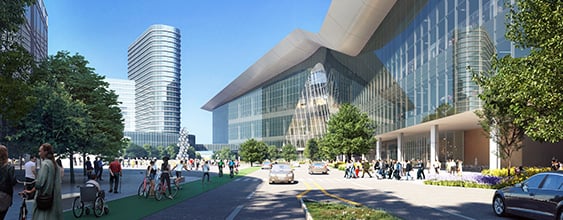In addition to construction of Tank Farm Road, the project required a re-route of the underground jet fuel lines, which would run immediately adjacent to Tank Farm Road. The existing Perimeter Road was relocated out and around the taxiways, allowing the service road to be routed along the west side of the airfield from the northwest Tank Farm all the way to the terminal core.
These projects were closely coordinated with multiple major airport stakeholders to avoid impacting aircraft de-icing and fueling operations occurring in the same vicinity.
“The construction management team coordinated extensively with multiple entities to ensure the successful completion of the project,” Lyon said. “We worked closely with the contractors for Tank Farm Road and the contractors of the O’Hare Fuel Committee to ensure all schedules were coordinated so that both contractors could remain working, even through the winter.”
For the taxiway project, WSP was responsible for inspection, contract administration, safety, quality assurance, estimating, document control and scheduling.
Work elements included site and utility relocation and reconstruction, clearing/grubbing, earthwork and embankment, erosion control, concrete and bituminous pavement, drainage and utility installation, electrical duct banks, watermain, airfield electrical infrastructure, pavement markings, roadway paving and roadway lighting.
Additionally, an existing FAA ASR-9 facility was required to be decommissioned and relocated in order to make way for the new Taxiway J. Strict schedule restraints related to the relocation of the facility posed a challenge that required the construction management team to re-phase the taxiway construction schedule so that the existing ASR-9 tower could remain in-place until the new ASR-9 facility was fully commissioned and operable.
















